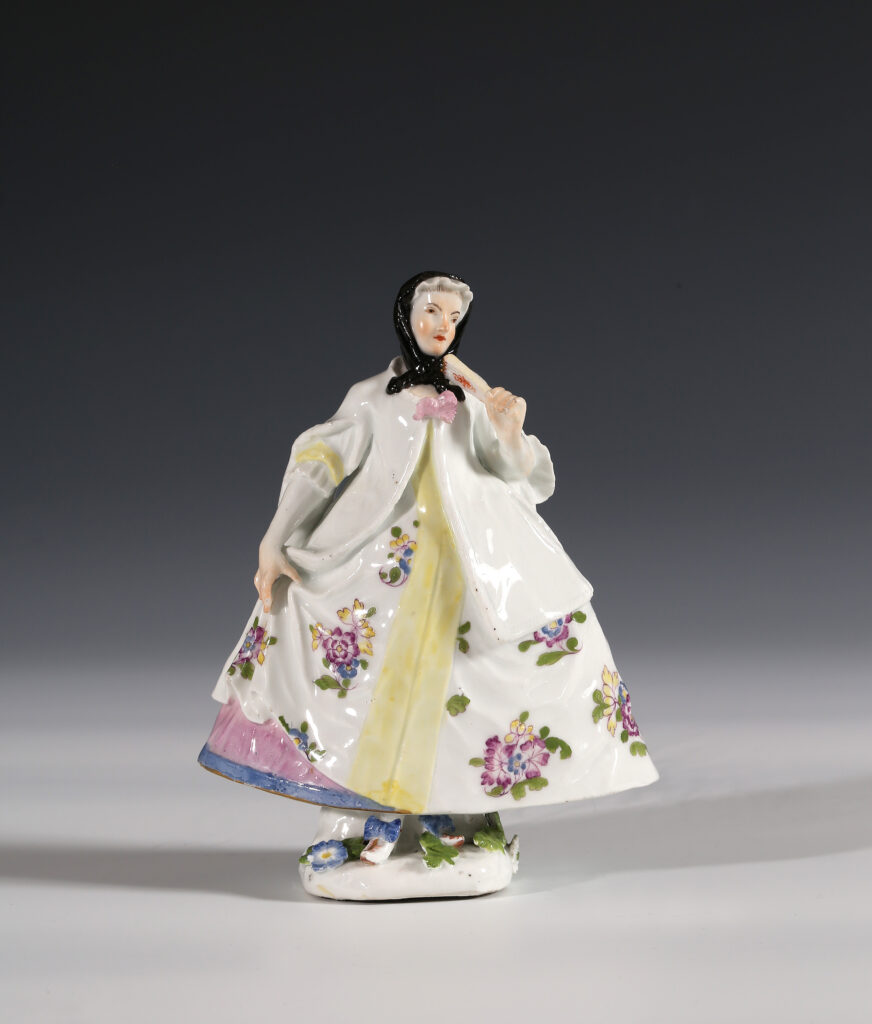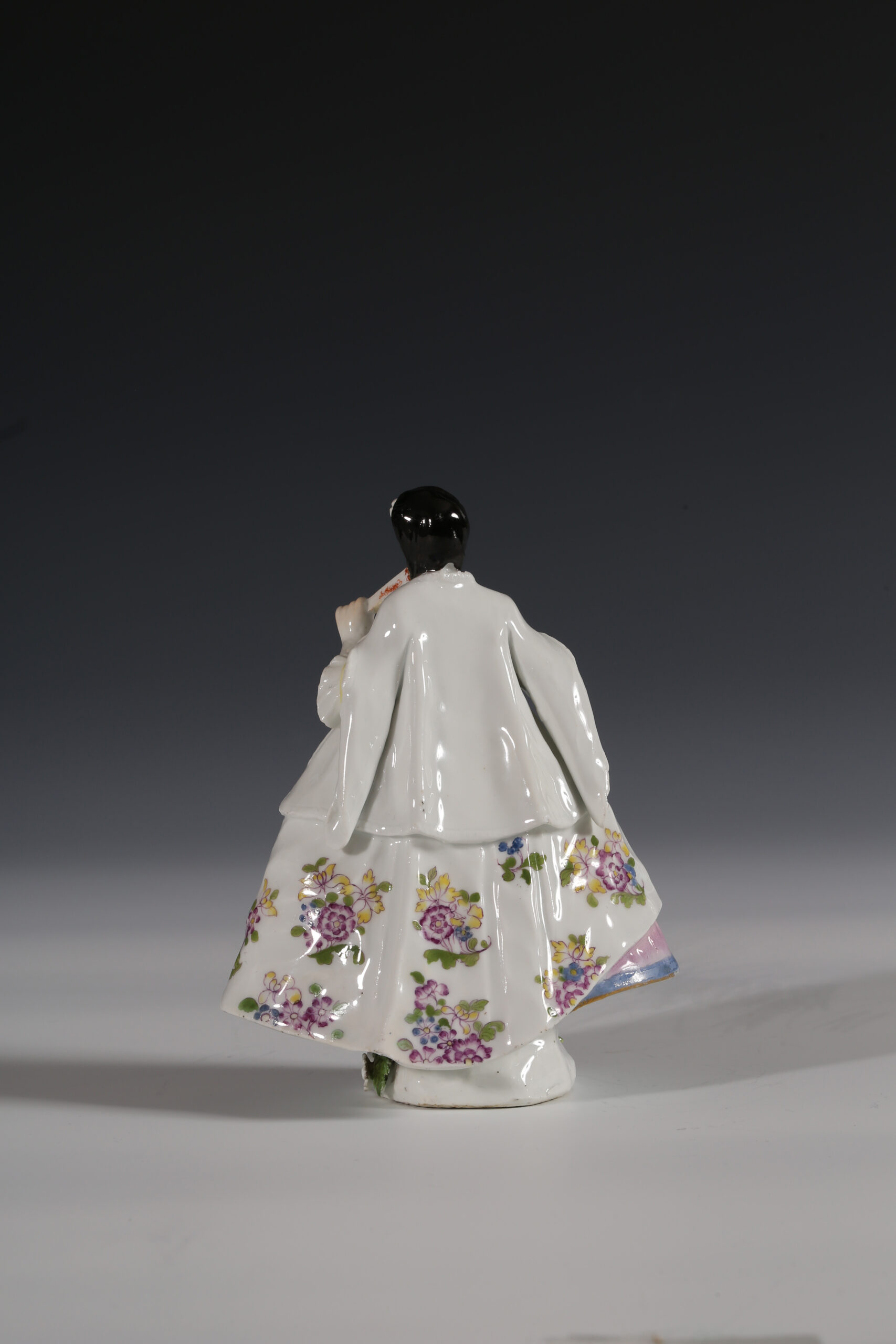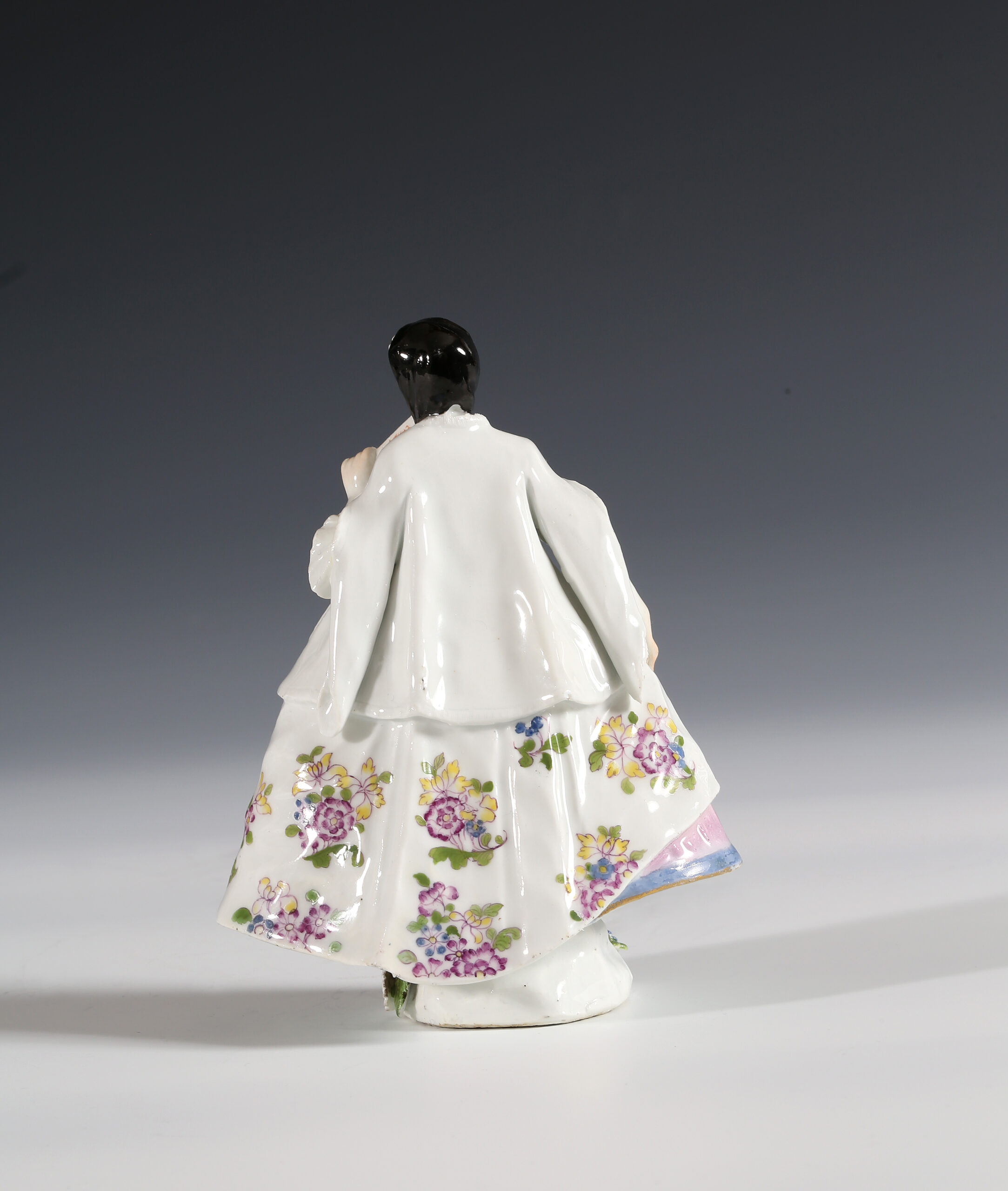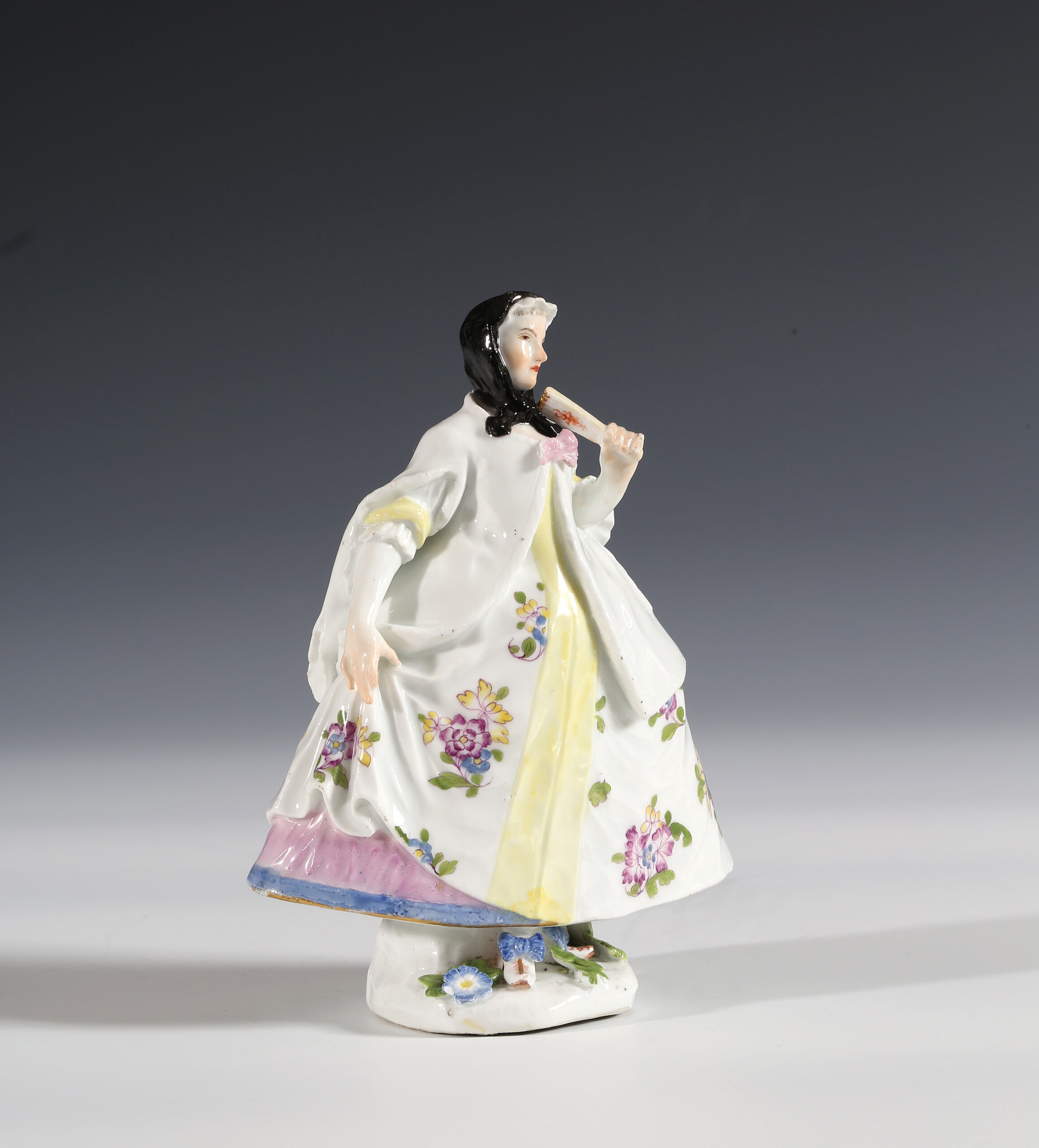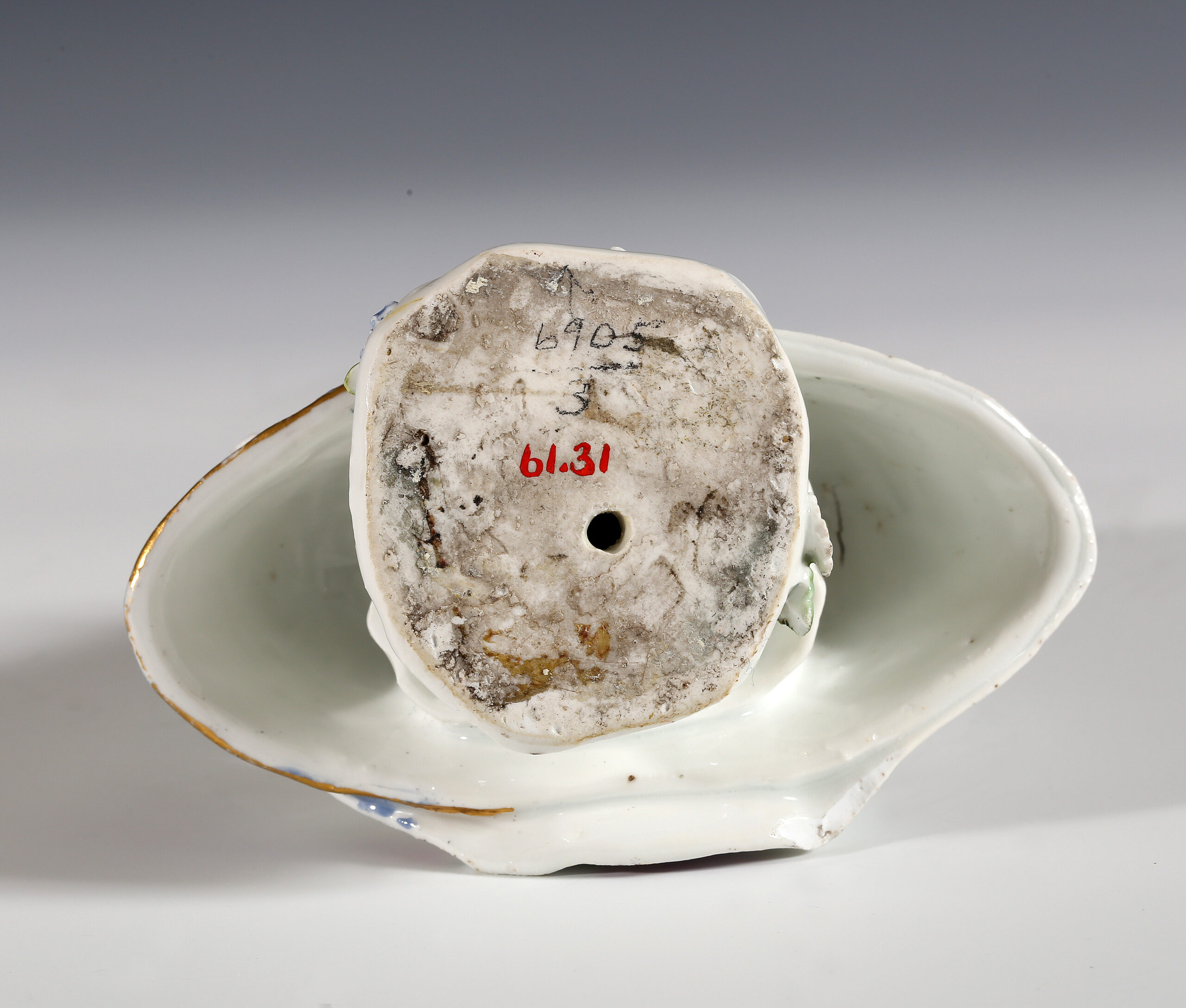This figure is identifiable as a Polish lady by the cut sleaves which were a fashion typical of the Polish aristocracy during the Baroque period. The Polish nobility believed that they descended from the ancient Iranian Sarmatians and adopted Ottoman-style clothing; it was more obvious in the male costume.
Sarah-Katharina Andres-Acevedo has identified this figure as the work of Johann Joachim Kaendler in 1743 with further work by Johann Friedrich Eberlein and Gottlieb Ehder in January and April 1744 (Andres-Acevedo 2023, vol. 2, p. 157, no. 432)
An example of this rather uncommon model must have been in England by the early 1750s as it was copied in English porcelain at the little-known Kentish Town factory in 1755/56 (Manners 2018, p. 4, figs. 7, 8)
Condition:
Chip to her bow at her neck, and leaves on the base
Provenance:
Indianapolis Museum of Art (Inv. no. IMA 61.31), deaccessioned 2021
Red inventory mark: 61.30 A, pencil mark: 6905, 3
Gift of Mr. and Mrs. John H. Bookwalter
Literature:
Andres-Acevedo 2023
Sarah-Katharina Andres-Acevedo, Die autonomen figürlichen Plastiken Johann Joachim Kaendlers und seiner Werkstatt zwischen 1731 und 1748, (2023)
References:
Manners 2018
Errol Manners, ’A group of London Porcelains in search of a home – the case for Kentish Town’, Transactions of the English Ceramic Circle, vol. 29, 2018
SOLD

